#Plant anatomy
Explore tagged Tumblr posts
Text
a couple grocery stores in my area have started selling what they label as a 'watermelon tenderloin', which is basically an unbroken long-way cross section of the watermelon, about an inch thick, with the rind cut off around the edges. they can be like $8 each and are sold in very limited quantities in single serve boxes and there are so many parts to this that i find really funny but most of all im obsessed with the idea that theres different prime cuts to a watermelon in the same way theres different prime cuts to a cow or something, and the watermelon tenderloin option gives you the best of the possible watermelon parts, of which there are famously only two. like it reminds me of those pics of people crouching with a gun and their dog with their garden vegetable hauls lined up in front of them parodying hunters like they shot the zucchini and i so badly wish i could get behind it as a trend but for $8 while a full watermelon is like $5-6 i unfortunately cannot
3K notes
·
View notes
Photo

Flower anatomy up close and personal!
(Source: Danilo Zavatin’s Instagram page)
#botany#botanical#botanical illustration#plants#tropical#tropical plants#nature#science#biology#plant anatomy#pink#yellow#green#scientific diagram#flowers#flower#tropical flowers#stamen#pistil#petals#anther#exotic flowers
308 notes
·
View notes
Text
Randomly Selected Botanical Terms: Phyllaries
Flowers in the aster family have one of the most recognizable shapes in botany – a circle with a series of petals surrounding it. If you were asked to draw a flower, there is a good chance your drawing would look something like a sunflower, a daisy, a cosmos, or an aster. It’s one of the most basic flower shapes, and yet it isn’t a single flower; it’s a pseudanthium – a false flower. This is…
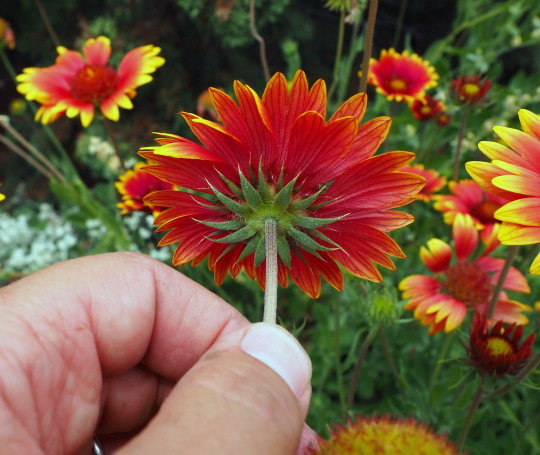
View On WordPress
#Asteraceae#blanketflower#botanical terminology#Botany#bracts#capitulum#Compositae#composites#curlycup gumweed#dandelion#florets#flower head#flowers#hoary tansyaster#involucre#Mexican sunflower#phyllaries#plant anatomy#plants#sunflower family
41 notes
·
View notes
Text


8/7/2024
Went to a cafe this morning, then had therapy, now studying at home for the rest of the work day. I've been working remote every Wednesday and devoting the day entirely to preparing for my qualifying exam. I like having the separate spaces for studying vs. research, and it also helps not having to switch tasks during the day. I just have to remind myself that the first step of studying is not opening Tumblr! Anyway, please enjoy my diagrams of plant gametophyte and embryo development :)
Edit: Disclaimer that anatomy and development varies widely among plants, and the diagrams above are based on eudicot development! Monocot embryo development is similar but does not form a heart or torpedo shape. Gymnosperm ovules are housed in scales rather than ovaries. Non-seed producing plants differ even more!
13 notes
·
View notes
Text
Nice lower eyelashes reference right there, Elendira.
Also, I just realised now she has heterochromia.

Which might bug her in some way, or make her uneasy, as she's sort of hiding the golden iris. Maybe because she'd want to have them both blue, like Naï.
Good old sense of inadequacy, unworthiness, self-consciousness, and expectation issues, lurking rigth there.
#elendira#elendira and her expectations#I think she must be projecting SO hard#plant eyelashes#we want them on the boys as well tho#plant anatomy#elendira the crimsonnail#naï#knives#millions knives#trigun#trigun stampede#trigunalysis#heterochromia
80 notes
·
View notes
Text
Got this hybrid rose mallow var. Perfect Storm at the plant market a month ago and this flower is tripled.
Kinda funny since this is it's first flower that opened for me. Love it's colour though, very pretty.



2 notes
·
View notes
Text
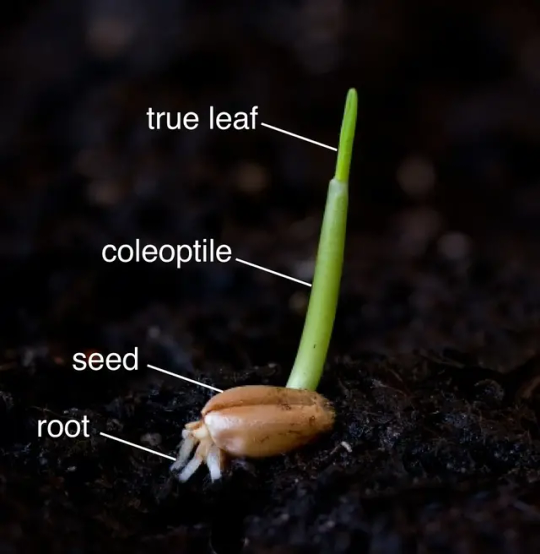
2 notes
·
View notes
Video
Dandelion Dispersal. Photograph by Stephen Geisel Via Flickr: Capturing the delicate moment when a dandelion releases its seeds into the wind. Each seed, equipped with a feathery parachute, drifts away, symbolizing new beginnings and the plant's natural cycle of regeneration. The image evokes a sense of lightness and the ephemeral beauty of nature. Photo by Stephen Geisel. Prints: society6.com/product/dandelion-dispersal-photograph_print... Photo Blog: luv-fi.com Instagram: www.instagram.com/steviegeisel/ Youtube: www.youtube.com/channel/
#dandelion#flower#nature#plant#yellow#wildflower#garden#outdoor#close-up#macro#natural beauty#detailed#flower photography#nature photography#macro photography#tiny creatures#dandelion seed head#fluffy#seeds#weed#blooming#botanical#gardening#lawn#spring#summer#green#plant identification#plant anatomy#dandelion petals
2 notes
·
View notes
Text
The development of the seed plant sporophyte can be broken down into three major stages (Figure 17.2): embryogenesis, vegetative development, and reproductive development. (...) An essential feature of this basic architecture is the presence of apical meristems at the tips of the root and shoot axes (see Figure 17.2), which are key to sustaining indeterminate patterns of vegetative growth.
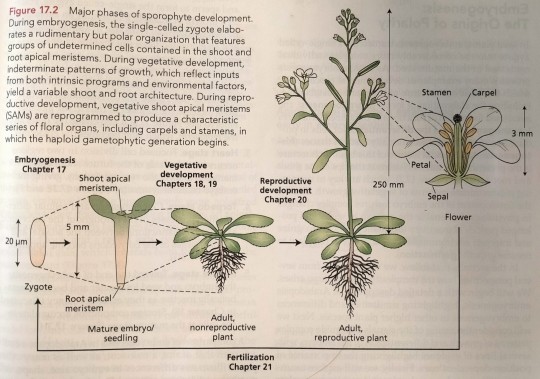
"Plant Physiology and Development" int'l 6e - Taiz, L., Zeiger, E., Møller, I.M., Murphy, A.
#book quotes#plant physiology and development#nonfiction#textbook#plant growth#plant development#indeterminate growth#apical meristem#plant shoots#plant roots#vegetative growth#sporophyte#seed plants#embryogenesis#plant anatomy#flower anatomy#zygote#flower#stamen#carpel#petal#sepal
13 notes
·
View notes
Text
THINGS I SAW AT THE UP NORTH THRIFT STORE






COOL ANIMALS AND SCIENCE







FUNNY OLD TOYS AND THE SILLIEST BOOK






And the cutest old kids drawing

#Thrift store finds#hello from the void#Croc brain#Frog brain#piranha#taxidermy#Taxidermy piranha#Taxidermy goat#Plant anatomy#Vintage#insect chart#pipettes#so many pipettes#Bimbo the clown#Mr Machine#These are all so silly I love them
1 note
·
View note
Photo
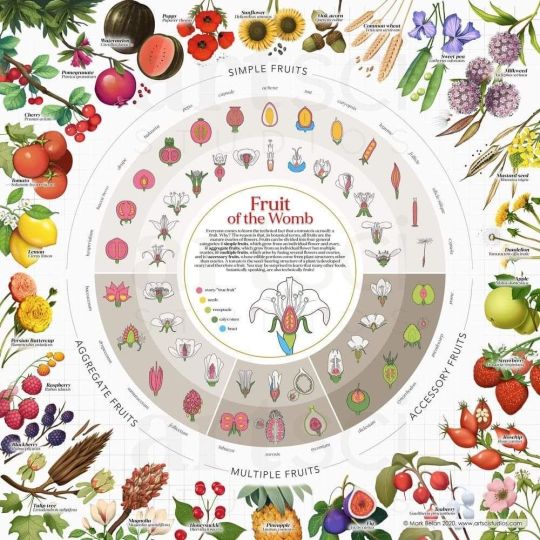
Fruit of the Womb: The Botanical Classification of Fruit A scientific illustrator, showing the botanical classification of fruit. Source: https://buff.ly/3Ie4D4F Credit: @markabelan
Found on Dr. Geetha Plackal’s Linked In page. #botany #Fruits #sciencecommunication #Savetrees #Savenature #Savebiodiversity #deforestation #Saveearth #peace #Happiness #Awareness #educational
#katia plant scientist#plants#plant#botany#fruit#flowers#gardening#naturalist#natural history#illustration#botanical illustration#art#science#biology#plant anatomy#anatomy#scientific diagram
210 notes
·
View notes
Text
Another Year of Pollination: Viscin Threads
While we’re on the subject of pollen-gluing mechanisms, there is another material apart from pollenkitt that a limited number of flowering plant families use to link their pollen grains together. It functions, much like pollenkitt, by aiding in the attachment of pollen to visiting animals. However, unlike pollenkitt, it isn’t sticky, oily, or viscous, and is instead more like a series of threads.…
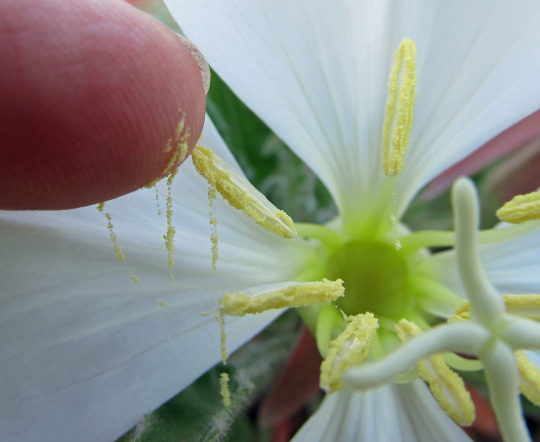
View On WordPress
#bees#birds#Caesalpinioideae#Ericaceae#flowers#fossil record#Lepidoptera#Oenothera#Onagraceae#plant anatomy#plant science research#pollen#pollen grains#pollenkitt#pollinators#Rhododendron#viscin threads#year of pollination
18 notes
·
View notes
Text
Floral Anatomy & Development
Today's educational post will be about flowers! Collectively, flowering plants are called Angiosperms. There are two main groups of Angiosperms: Monocots and Eudicots. This post will go over the general parts of flowers, differences between Monocot and Eudicot flowers, and the genes involved in floral development.
Parts of a flower:

A flower is said to be "perfect" if it has all of these parts and "imperfect" if it has only "female" or "male" parts. Plants with imperfect flowers can be monoecious, in which female and male flowers are on the same plant, or dioecious, in which female and male flowers are on separate plants. Monocots and Eudicots both include monoecious species, dioecious species, and species with perfect flowers. The main difference between Monocot and Eudicot flowers is that flowers parts of Monocots usually come in multiples of 3, whereas flower parts of Eudicots usually come in multiples of 4 or 5.
Flower development:

(above image from Chanderbali et al, 2016)
The above model, known as the ABC model of flower development, holds that each flower part is encoded by different combinations of genes expressed in whorls/ concentric circles. E genes (SEPALATA1-4) are required for any kind of floral development. The addition of A genes (APETALA1) on their own encode sepals. A genes and B genes (APETALA3 & PISTILLATA) together encode petals. C genes (AGAMOUS) and B genes together encode stamens. C genes on their own encode carpels (also known as pistils). The A and C genes mutually inhibit each other, maintaining the boundaries of their expression. This model was first described in Coen et al, 1991. E genes were added to the model by Pelaz et al, 2000. There are also D genes, which are involved in ovule development, but these are often left out of the simplified model.
Important Terms: stem, sepal, petal, stamen, carpel/pistil, angiosperm, monocot, eudicot, perfect flower, imperfect flower, monoecious, dioecious
8 notes
·
View notes
Text

Date palm (Pheonix dactylifera) stem...stem anatomy
1 note
·
View note
Text
Root of Osmunda cinnamomea. The anatomy of woody plants. 1917.

Root of Osmunda cinnamomea. The anatomy of woody plants. 1917.
Internet Archive
2K notes
·
View notes
Text
The elongation zone begins approximately 0.7 to 1.5 mm from the apex (see Figure 5.9).


"Plant Physiology and Development" int'l 6e - Taiz, L., Zeiger, E., Møller, I.M., Murphy, A.
#book quote#plant physiology and development#nonfiction#textbook#plant growth#cell differentiation#roots#plant cells#plant anatomy#cell division
0 notes